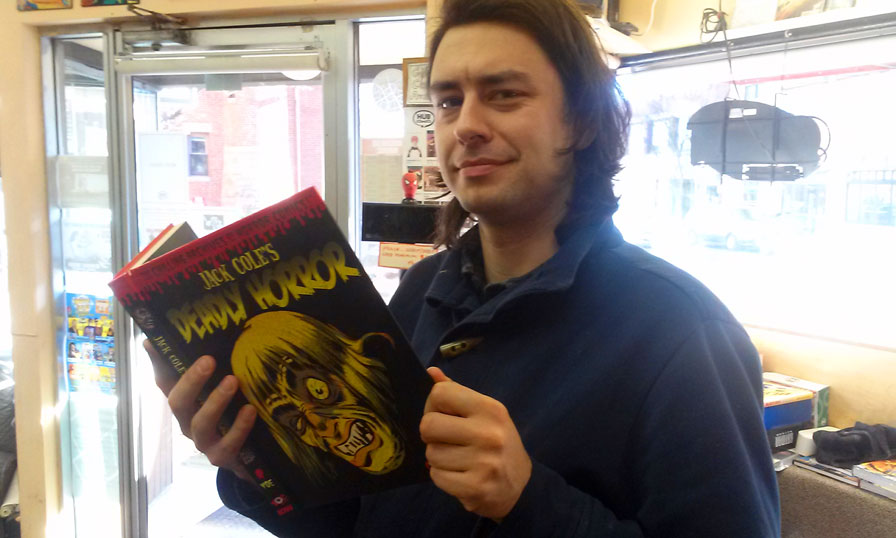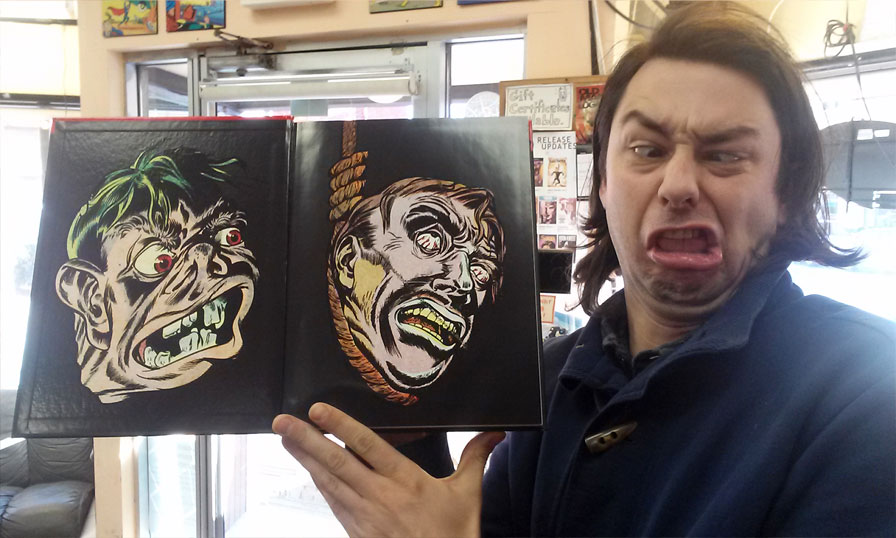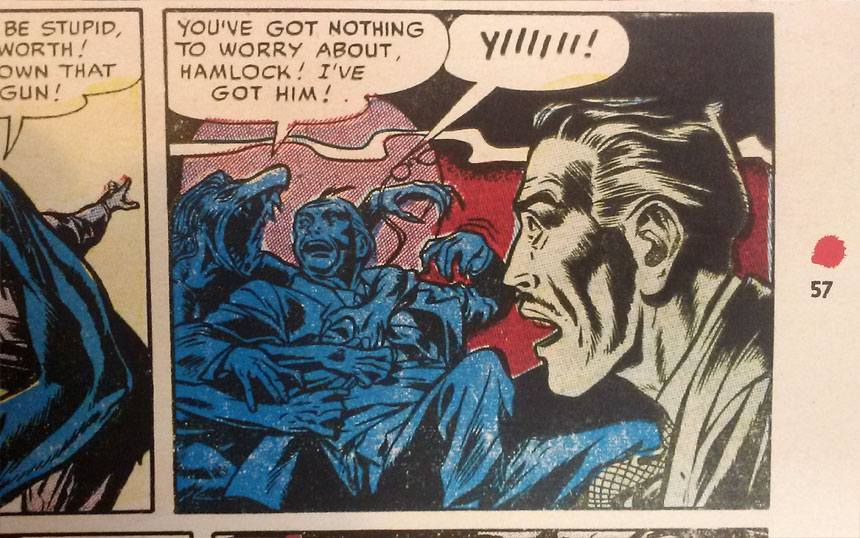 Jack Cole’s Deadly Horror
Jack Cole’s Deadly Horror
by Jack Cole, edited by Craig Yoe
IDW Publishing/Yoe Books, $24.99
Jack Cole is a highly significant cartoonist who helped shape the medium, but he isn’t a household name such as Jack Kirby, Bill Watterson or Walt Disney. This is because a large portion of his work isn’t appealing to look at, and in fact, his art can repulse and horrify. Cole’s illustrations had such an impact on viewers that he was exhibit A in psychiatrist Fredric Wertham’s book, “Seduction of the Innocent”. This so-called expose, published in 1954, argued that the rise of comic book consumption correlated and caused an increase in juvenile delinquency. Due to populist disapproval of these controversial, adult content laced comic books read by children, publishers developed a “comics-code,” a set of rules that censored subversive or negative content in the medium. This handicapped the art and business of comic books for decades, and to a significant degree. Here is a small sampling of how absurd the code was, which should give you an idea of the limited perimeters in which cartoonists could work to obtain mass distribution:
* Policemen, judges, government officials, and respected institutions shall never be presented in such a way as to create disrespect for established authority.
* All lurid, unsavory, gruesome illustrations shall be eliminated.
* Inclusion of stories dealing with evil shall be used or shall be published only where the intent is to illustrate a moral issue and in no case shall evil be presented alluringly, nor so as to injure the sensibilities of the reader.
* Suggestive and salacious illustration or suggestive posture is unacceptable.
* Scenes dealing with, or instruments associated with walking dead, torture, vampires and vampirism, ghouls, cannibalism, and werewolfism are prohibited.
This is just a small sampling of what the Comics-Code demanded. While there are examples from the 1960s of cartoonists working around these perimeters, they had to title their work as Magazines or have their work exclusively sold in more limited print runs at “head shops”, underground hippie markets off the radar of the corporate publishing juggernaut. So what did Jack Cole draw to cause such an upset that it changed the medium itself in the United States for decades? Well, lucky for you, you can find out thanks to Yoe! Publishing’s “Jack Cole’s Deadly Horror”, a collection of Cole’s spookiest stories. By today’s standards, it is laughable that these pulpy late night spine chillers were considered subversive to the point of corrupting young minds. Or perhaps not … for the sake of argument, let’s play devil’s advocate. There is something “off” about Cole’s horror comics. They go beyond your average pre-code horror, which can often suffer from the setbacks of the publishing industry or from a general lackluster attitude about the medium itself.
 Unlike lesser comics from the era, Cole’s control of facial expression and as a result, facial contortion, is expert. His ghouls often resemble rubber face finger puppets, stretching devilishly to suggest to the reader what is occurring on the page is happening in a more hostile universe where the laws of physics are more unhinged than in our own. His attention to dramatic lighting adds tension to each contorted expression, adding to the otherworldly nature of his horror. The stories are a bit more challenging, often commenting on mental illness like in “Death Prowls the Streets”, or citing researched pagan gods in order to give back story while illustrating isolated homicidal cults like in “Orgy of Death”. Everything is a bit more menacing and Cole isn’t afraid to illustrate death itself such as in “Hangman’s Horror”. The effect is unsettling, although it would be a stretch to say I have an impulse now to shoplift, jaywalk or indulge in any other juvenile delinquency from reading his book.
Unlike lesser comics from the era, Cole’s control of facial expression and as a result, facial contortion, is expert. His ghouls often resemble rubber face finger puppets, stretching devilishly to suggest to the reader what is occurring on the page is happening in a more hostile universe where the laws of physics are more unhinged than in our own. His attention to dramatic lighting adds tension to each contorted expression, adding to the otherworldly nature of his horror. The stories are a bit more challenging, often commenting on mental illness like in “Death Prowls the Streets”, or citing researched pagan gods in order to give back story while illustrating isolated homicidal cults like in “Orgy of Death”. Everything is a bit more menacing and Cole isn’t afraid to illustrate death itself such as in “Hangman’s Horror”. The effect is unsettling, although it would be a stretch to say I have an impulse now to shoplift, jaywalk or indulge in any other juvenile delinquency from reading his book.
 Jack Cole committed suicide on August 13th, 1958. While one can put the pieces together and connect his comic’s lurid material as a warning sign of depression or suicidal tendencies, among Cole’s peer group the event was seen as “One of the most baffling events in the history of cartooning.” (Quote: RC Harvey). The suicide note he left for his wife has never been made public and his widow, Dorothy, never spoke with the Cole family again, remarrying a year later. In 1991, Cole was placed in the Jack Kirby Hall of Fame and then won the Will Eisner Award Hall of Fame in 1999. He is also famous for creating “Plastic Man”, of which another essay can be written and for being a consistent Playboy Magazine illustrator.
Jack Cole committed suicide on August 13th, 1958. While one can put the pieces together and connect his comic’s lurid material as a warning sign of depression or suicidal tendencies, among Cole’s peer group the event was seen as “One of the most baffling events in the history of cartooning.” (Quote: RC Harvey). The suicide note he left for his wife has never been made public and his widow, Dorothy, never spoke with the Cole family again, remarrying a year later. In 1991, Cole was placed in the Jack Kirby Hall of Fame and then won the Will Eisner Award Hall of Fame in 1999. He is also famous for creating “Plastic Man”, of which another essay can be written and for being a consistent Playboy Magazine illustrator.
-Jack Turnbull
